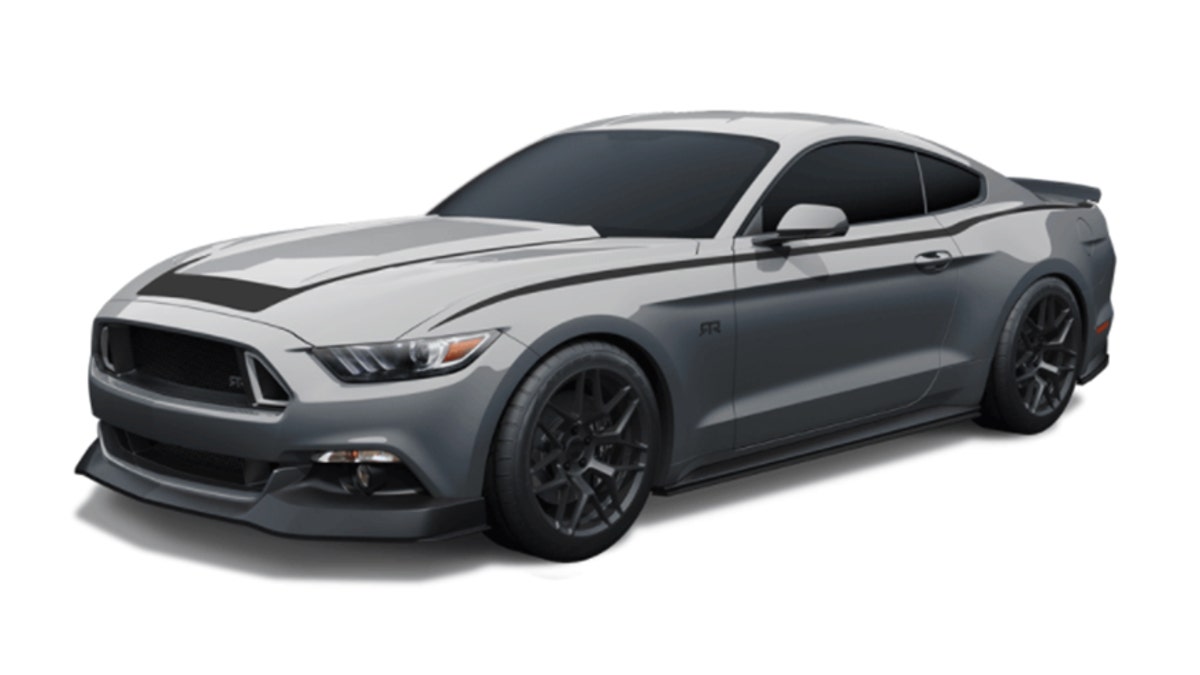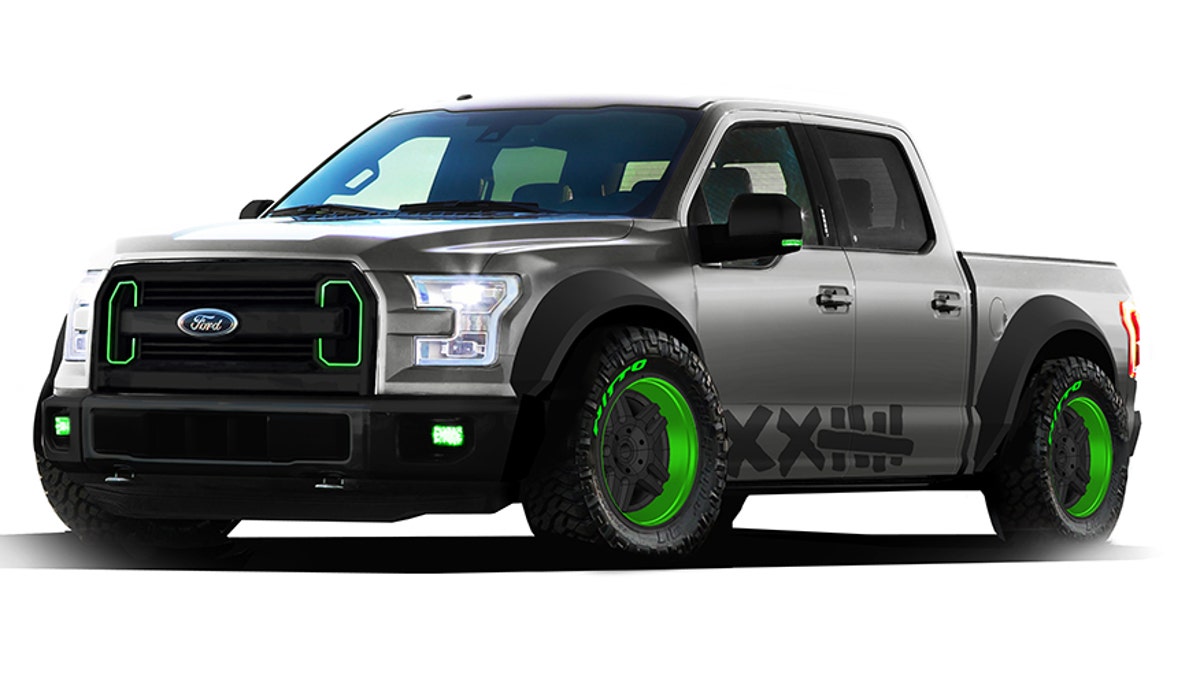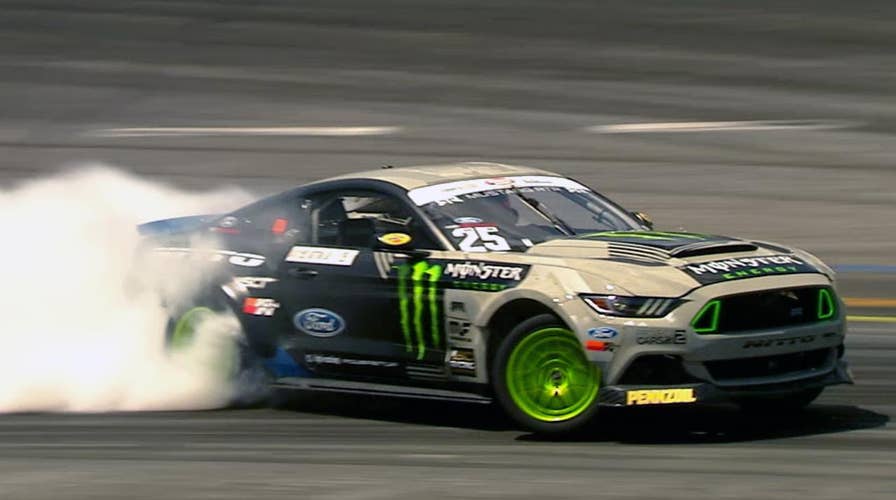Vaughn Gittin Jr. is ready to sell you a Ford Mustang
Vaughn Gittin Jr. doesn't just race a Ford Mustang, he designs and sells his own version of the American muscle car. Gary Gastelu met up with him at a Formula DRIFT competition to talk about his growing business
Back in the 1960s, retired road racing driver Carroll Shelby teamed up with Ford to develop a line of specialty high performance Mustangs, and he leveraged the project into building a business that’s going strong a half-century later.
Today another American racer is well on his way to following in Shelby’s tire tracks, just in a more millennial kind of way.
Vaughn Gittin, Jr. has been one of the country’s top drift racers since the acrobatic motorsport was imported from Japan in 2004. The 2010 Formula Drift series champion was also one of the first to bring Detroit muscle into the competition, in the form of the Ford Mustang. Today, Gittin’s an official member the Ford Racing stable and still drives a Mustang.
He’s been selling his own for the past couple of years, too, under the RTR brand.

The name is short for Gittin’s motto: Ready to Rock, and the Mustang RTR was designed to look like his competition car. There are actually three versions of the car that share the same style, but have increasing levels of performance courtesy of parts developed by RTR and Ford.
All feature a unique body kit with a chin splitter, rocker panels, and rear spoiler plus a set of triangular LED lights in the grille and a graphics pack with hood and side stripes that give the retro Mustangs a very modernized look.
Stage 1 models go for $7,950 over the price of a donor Mustang and get lowering springs and 19-inch wheels, both from RTR, and can be ordered with either the Mustang’s 315 hp turbocharged four-cylinder or 435 hp 5.0-liter V8.
Stage 2 costs $11,995 and adds 20-inch wheels, an RTR-engineered adjustable suspension, axle-back exhaust and engine controllers that bump up the power to 345 hp on the turbos and 460 hp on the V8s.
That’s still pretty paltry compared to Gittin’s race car, which runs a 1,000 hp NASCAR-based V8, so there’s also a $20,995 Stage 3 package offered with an intercooled Ford Performance supercharger that cranks out 670 hp. An even more extreme 'tactical' suspension setup can be added to it for $5,000.
Those prices compare favorably with similar Ford-affiliated modified Mustangs, like the ones from Roush Performance. The cars are sold through a network of a several dozen authorized Ford dealers across the country, who also build and service them for RTR. Far from an easy money brand licensing deal, Gittin promises he was involved in all stages of development, including test driving the cars.
When I caught up with him at this season’s Formula Drift event in Wall, N.J., he let me take one of the Stage 2 V8s out for a quick spin. Not too quick, unfortunately. The track was off-limits. But on the street, the extra oomph -- which includes a boost to 420 lb-ft of torque -- was very apparent in the ease with which it spun the wheels.
I didn’t get to get to push the car hard enough to pass judgement on its handling, but the changes don’t ruin the Mustang’s performance-plush ride. It’s still a very comfortable cruiser. Gittin says the suspension adjustments allow for a dramatic change in Mustang’s attitude, from safe understeer to the kind of tail-happiness that puts a smile on his face. The one I drove was set in the middle for a neutral stance aimed at folks who want to take it to do laps at old-fashioned track days.
And those folks aren’t just Gittin fans. He says a lot of his dealer partners order the cars themselves to attract shoppers into their showrooms, and end up sending them out the door with people who never heard of him and just like the way they look and drive.

Boasting 12 inches of King shock-controlled travel via a Kibbetech custom suspension, this 2015 F-150 purpose-built by Formula DRIFT superstar Vaughn Gittin Jr. is designed to take full advantage of the weight savings and serious torque offered by the all-new F-150. With its unique, aggressive looks and Air Lift Performance air ride, this street truck aims to turn heads and elicit huge smiles, while providing massive amounts of fun and adrenaline for up to five passengers who strap into its Recaro seats.
Gittin expects to sell about 100 fully-built cars this year, and most of the parts can also be purchased individually. It’s a growing endeavor that he sees outlasting his racing career, although the 36-year-old isn’t planning to give that up anytime soon.
What he is planning is an RTR take on the Ford F-150 pickup that should be ready next year and, of course, a new Mustang RTR based on the redesigned 2018 model coming this fall.
